- Home
- /
- Dog Breeds
- /
- German Shepherd Breed Profile
What to expect from our article
Breed profile
German Shepherds, also known as Alsations, are a very energetic and intelligent breed of dog. They were originally bred for herding, which is still an instinct that remains within the breed. Today, they are often used as working dogs in the police and army due to the fact that they are one of the most intelligent breeds in the world, and with the right teachers, can be easily trained. They are also a very loyal breed and as a result, they work well as guide dogs for the blind.
As well as all the loving traits that go with the German Shepherd breed, they also have a very high amount of energy and require lots of regular exercise to maintain their physical and mental wellbeing. They can often become frustrated if they are not adequately exercised and are likely to display undesirable behaviour. This athletic breed needs at least 2 hours of exercise a day which can come from walking, playing, and other activities that keep the mind and body active. Due to this, German Shepherds require a lot of time, dedication and space. You need to have free time to spend with this breed and be dedicated to provide for their needs.
Training German Shepherds and Socialisation
German Shepherds have a natural aptitude for training and with the right guidance, can quickly pick up training commands. When it comes to training, it is important to remain consistent for positive results to show. Puppy training is really important with this breed as it normalises this training from a young age and it will be normal behaviour for them when they are adults.
As with most dogs, German Shepherds also need to be socialised with people, other animals, and different environments from puppies. This specific breed thrives on company and is extremely loyal, so this step is especially important. Socialisation will also get them comfortable with new environments and people and they can learn how they should behave in different situations.
Grooming
German Shepherds have thick double layered coats, which means that they shed their fur very often. You should brush their fur at least once a week, if not more, to keep their coat healthy, free of mats, and to reduce the build up of dead fur. This breed doesn’t need to be bathed often unless necessary.
Common Health Conditions
Most German Shepherds are typically healthy dogs and the breed has an average life span of 10 years, which in some cases can be higher. However, like any other breed of dog, there are certain health conditions that can be inherited and it is important to know about them. They can either be born with these conditions, or they can develop later on in life.
Hip Dysplasia
Hip dysplasia is a complex condition that can be inherited where the hip joint does not correctly develop. As the dog gets older, the joint can deteriorate and lead to loss of function. This can cause pain, stiffness and discomfort.
Hip dysplasia is controlled by multiple different genes and each of the genes that make a dog’s hips can have different variants. Some of these variants can cause or increase/decrease the risk of this condition. Breeders should use the hip dysplasia screening scheme to have the dog’s hips evaluated.
Elbow Dysplasia
There are also other recommended screens and tests that can take place to check for other health conditions. The elbow dysplasia screening scheme can help to identify any cause for concern. Similarly to hip dysplasia, this inherited condition happens when the elbow joints do not properly form. This condition can affect one or both elbows and can cause pain and swelling. It can also lead to other issues later in life such as arthritis.
Symptoms of Hip and Elbow Dysplasia in Dogs
- Limping or stiffness that can be made worse with exercising
- Elbows being held at a strange angle
- Front paws facing outwards
- Swollen elbows
- Decreased activity
- Decreased range in motion
- Difficulty running or jumping
- Difficulty getting up
Eye Screening
German Shepherds can inherit or develop different eye conditions that can cause pain and even blindness if untreated. A common cause for concern in older German Shepherds is cataracts. A common symptom of this condition is the eye turning to a cloudy colour instead of being clear. This can cause a complete loss of sight, but can sometimes be surgically removed to restore sight.
German Shepherds are also one of the commonly affected breeds for the hereditary disease ‘Pannus’. This condition develops as the pet ages and UV light, smoke and high altitudes can contribute to the development of pannus. The main sign of pannus is when a pink mass appears on the cornea of the eye, most commonly the outer side. There are treatment options available to treat the condition, but if left alone it can cause blindness.
Haemophilia in Male German Shepherds
Haemophilia is a blood clotting disorder that can be passed on through generations of dogs. Whilst females can get the disorder, it is extremely unlikely and is more common in male dogs. Dogs that have the disorder may bleed spontaneously and it can be a problem both internally and externally. Haemophilia disorder is a deficiency in a single clotting factor that is essential for normal blood clotting. Without this factor, the blood cannot clot effectively causing excessive bleeding.
Inherited Allergies
Like humans, dogs can get allergies. However, allergies in dogs can cause itching and irritation to the skin. It is known to be common for German Shepherds to have allergies and the feet, folds in the skin, belly and ears are the areas that are most affected by them. Between the ages of one and three is where symptoms typically begin to show. These symptoms can include:
- Licking the paws
- Frequent ear infections
- Rubbing the face
- Swollen face, eyes, ears or lips
- Itchiness
- Red and inflamed skin
A vet can conduct allergy testing to see if your dog does have any allergies and there are different treatment options available to combat allergic reactions in dogs.
Dwarfism
Pituitary dwarfism is an inherited disorder that is found most often in pastoral breeds, particularly German Shepherds. It is estimated that nearly 20% of the breed carry the gene and both parents have to carry the faulty gene in order for the condition to be passed on. The pituitary is a gland in the brain that produces hormones which are produced for a variety of body functions such as growth, reproduction, and metabolism. The lack of these hormones is what causes dwarfism in dogs.
Symptoms of this condition include:
- Renal failure due to underdeveloped liver and/or kidneys
- Heart problems
- Difficulty breathing
- Slow intelligence due to underactive thyroid glands
- Undescended or small testes in male dogs
- Irregular heat cycles in females
- Delayed dental eruption
Canine Degenerative Myelopathy
Degenerative Myelopathy is a spinal cord disease that will gradually cause paralysis in the hind legs. This disease is most commonly seen in German Shepherds at around 8 years old but can also affect other breeds. The disease deteriorates the nerves in the spine which causes paralysis. Unfortunately there is no cure or treatment. Symptoms can be subtle at first, but some things to look out for are:
- Weak or wobbly hind legs
- Difficulty jumping or climbing stairs
- Difficulty walking for long periods of time
- Dragging back feet or legs
- Incontinence
Digestive Disorders and Bloating
Certain breeds, including German Shepherds are at risk of digestive disorders and bloat. Gastric Dilatation and Volvulus is a life threatening condition where the stomach rotates and cuts off the passage of food and water. It generally occurs in larger dogs and symptoms can include a distended stomach and dry heaving.
General Appearance
- Slightly longer than they are tall
- Powerful build and well muscled
- Weather resistant coat
- Clear definition of masculinity and femininity
Characteristics and Temperament of German Shepherds
- Versatile working dog
- Attentive, alert, and resilient
- Great scenting ability
- Loyal
- Calm
- Confident
- Lack of nerves
Head, Skull and Facial Features
The head and skull are proportionate to the body and are broad between the ears. The skull of a German Shepherd is approximately 50 percent of the whole size of the head. They have a strong muzzle, the top of which is straight, and firm lips that close tightly together.
This breed has medium sized, almond shaped eyes that should not protrude and are usually of a darker colour. They also have medium sized ears that are broad at the base and are carried erect. Their ears are almost parallel and are firm in texture but should never be hanging. German Shepherds have strongly developed jaws with a perfect scissor bite. Their teeth are healthy and strong. A full set of 42 teeth is desirable.
Neck and Forequarters
This breed is known to have a fairly long and well muscled neck that is raised when excited and lowered at a fast trot. Their shoulder blades and upper arms are equal in length and the shoulder blades are set approximately 45 degrees laid flat to the body. Their upper arms are strong and join the shoulder blade at approximately 90 degrees. The elbows should not turn in or out when moving or standing. The length of the foreleg slightly exceeds the depth of the chest.
Body
German Shepherds are undersized dogs with stunted growth and are high legged dogs. They aren’t too broad and are well-developed with well formed and long ribs that aren’t barrel shaped or too flat. This allows free movement when gaiting. Their bellies and back are firm and the back is straight and strongly developed. Weak or soft backs are highly undesirable.
Hindquarters, Feet and Tail
The hindquarters are strong and broad which enables effortless forward propulsion. The upper and lower thigh are equal in length. If looking from the rear, the hind legs are straight and parallel to each other.
This breed has rounded toes that are well closed and arched and their paw pads are well cushioned and durable. The nails are short and strong and are also dark in colour.
Their tails are bushy and the ideal length is when it reaches to the middle of the metatarsus. When resting, the tail hangs in a slight curve and when moving it is raised and the curve slightly increases. Ideally, it should never be above the level of the back and shouldn’t be short, rolled or curled.
Coat and Colour
German Shepherds have a double layered coat. Their outer coat consists of straight, hard and dense hair. The hair on the head, front of legs, and paws is shorter, whereas the hair on the neck is longer and thicker. In some males, it actually forms a slight ruff. The hair is also longer on the backs of the legs. They have a thick undercoat and the tail is bushy with light feathering underneath.
Common coat colours for German Shepherds are:
- Black or black saddle with tan or gold to light grey markings
- All black/all grey with lighter or brown markings (sables)
- Bi-colour – Mostly black and may have tan or gold markings on their heads, chest, legs, and feet. Black markings may also occur.
Their noses should be black in colour and their undercoat is usually grey or fawn coloured unless they have a black coat. The colour doesn’t predetermine any of the breeds characteristics or work ethic. The final colouring can only be determined when the outer coat has developed.
Size
Ideal height for dogs – 63cms.
Ideal height for bitches – 58cms.
2.5cm either side of these measurements is within the ideal range.
I absolutely love German Shepherds and grew up with them for most of my life, so I am aware of what it means to own one. If a German Shepherd is not the type of dog, you want to take on have a look at our french bulldog profile.

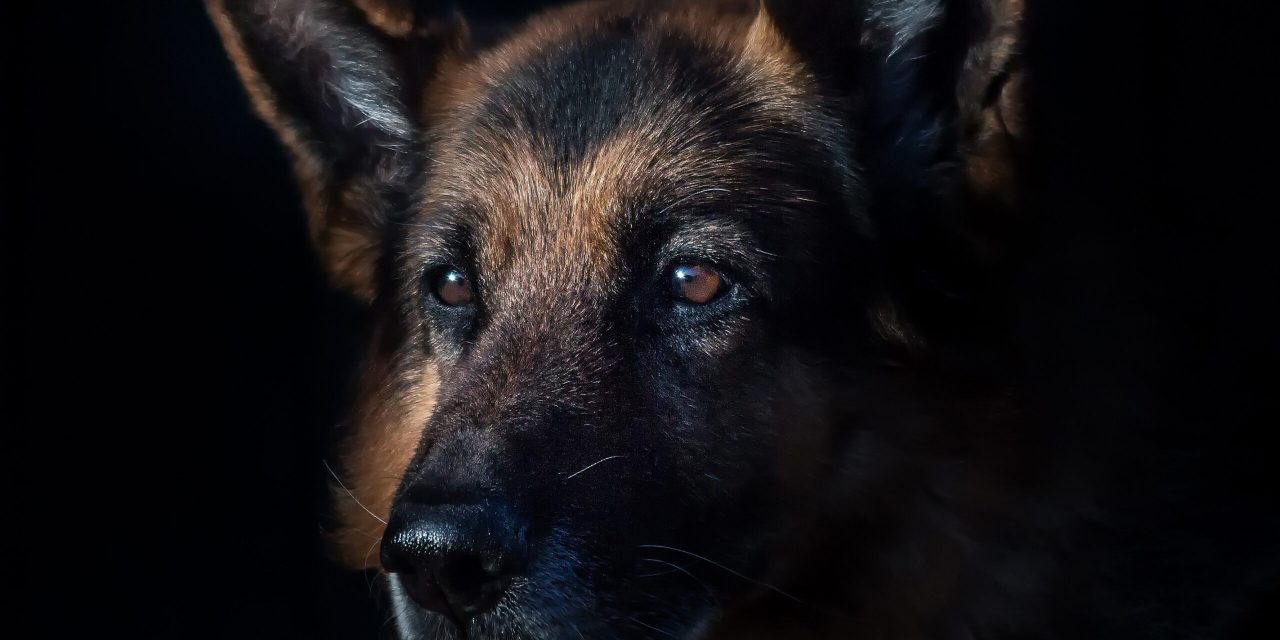
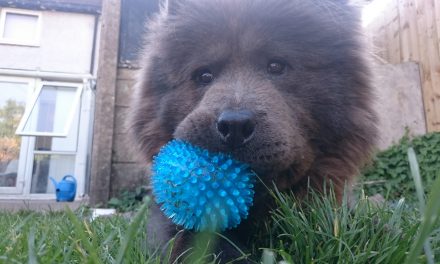
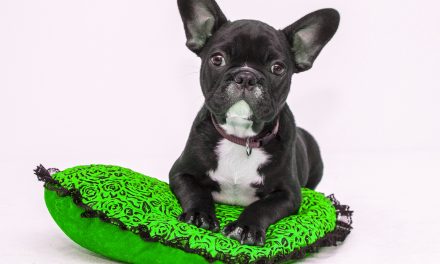
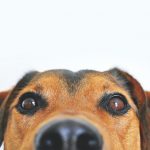

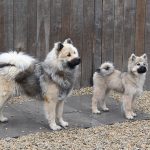

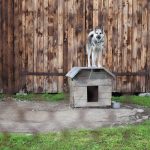
Trackbacks/Pingbacks